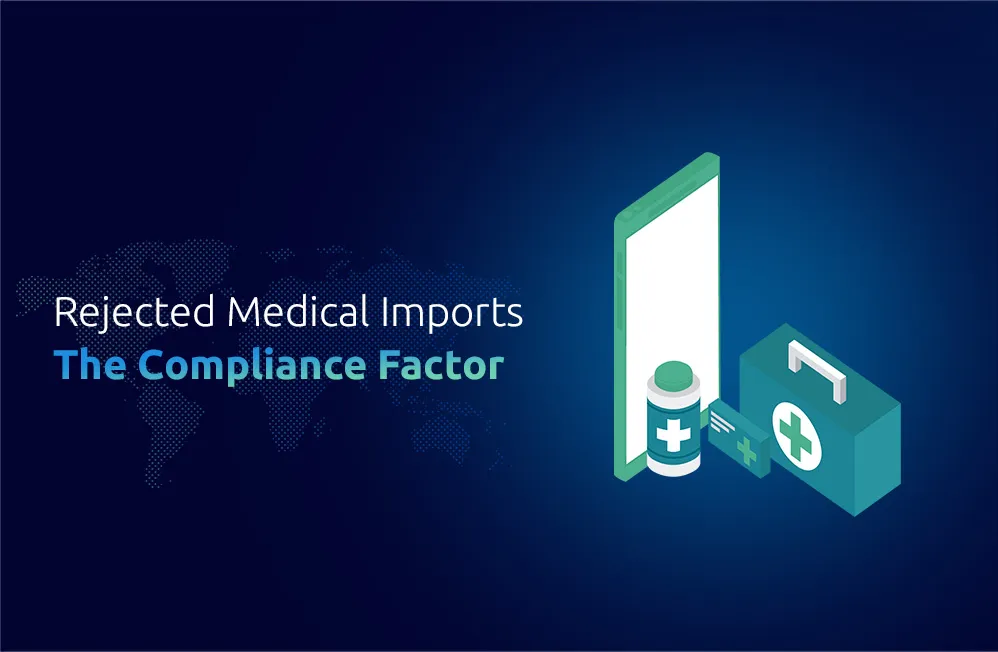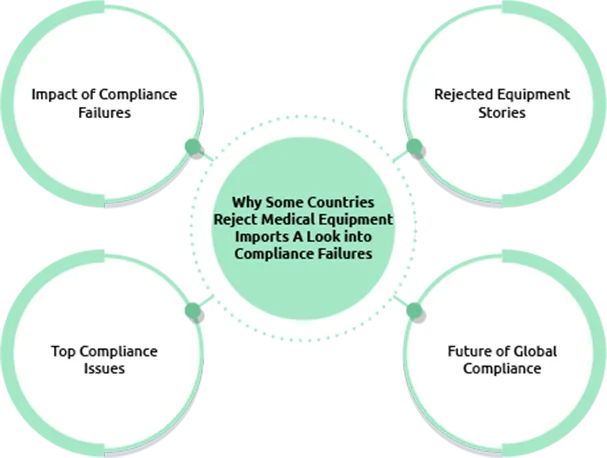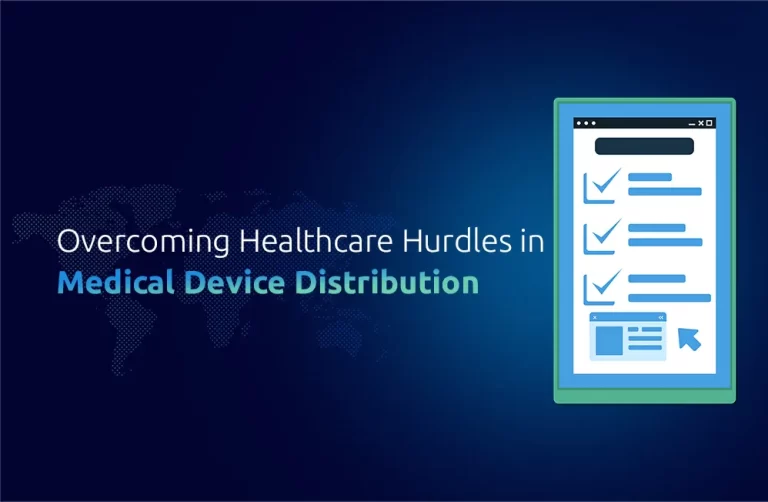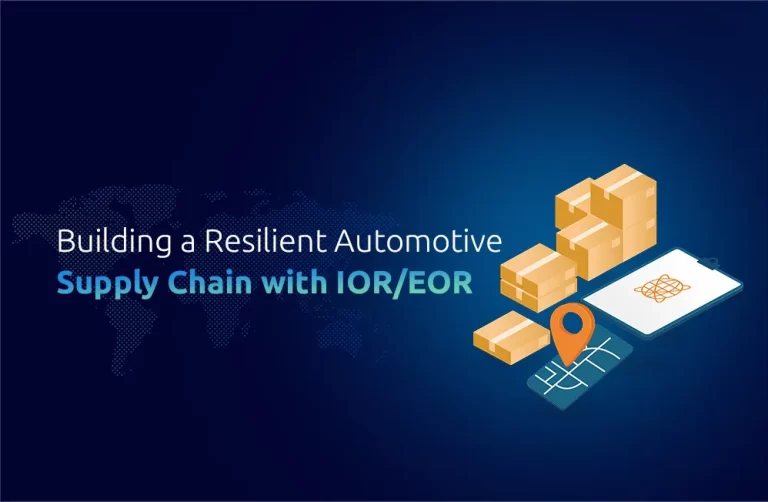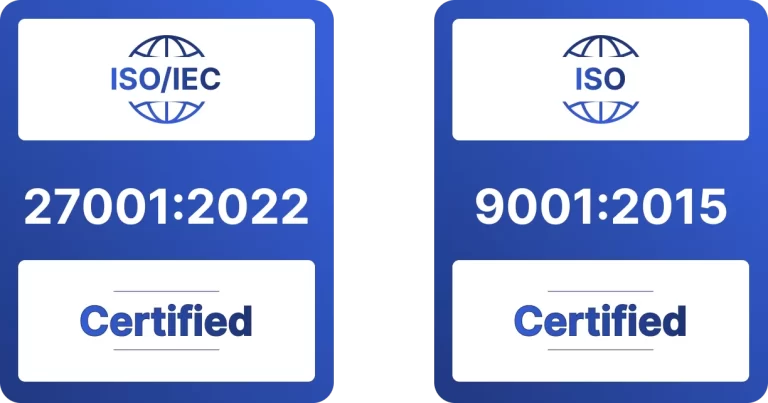Insight
The healthcare systems of all nations heavily depend on medical equipment as a fundamental component. Increasing medical device requirements fail to overcome countries that refuse to accept imported medical equipment. Importers face delays, increased costs, & potential legal issues because manufacturers fail to comply with regulations. Knowing what leads to compliance failures in medical equipment importation and how to minimize them establishes vital importance for organizations that engage in the medical equipment trade.
Medical Equipment Compliance and Its Global Importance
International medical equipment importation operates under strict regulatory frameworks in the worldwide market. Every nation has unique regulations & standards that determine the requirements for medical device manufacturing, testing, labeling, and delivery protocols. International regulations protect patients by maintaining safety standards and guaranteeing effective operation alongside the management of public health requirements.
Customer compliance issues lead to frequent rejections when trying to import medical equipment. The import process leads to medical equipment being rejected due to failures that appear during product certification and subsequent customs clearance and health and safety standards verification.
Why Do Countries Reject Medical Equipment Imports?
Lack of Proper Certification
Foreign manufacturers must gain country-specific medical device certifications for exporting goods through each nation’s regulations. The foreign importer of record customarily bears the responsibility to validate that medical equipment fulfills regional specifications. Customs inspections reject shipments when manufacturers do not acquire necessary certifications, such as FDA approval for United States markets and CE marking for European markets. The absence of essential certifications prevents governments from validating medical devices’ safety qualities and operating performance.
Non-Compliance with National Health Standards
The levels of medical device standardization requirements differ substantially among world nations. The approval standards between countries create acceptance, which differs from country to country. A medical device subject to import into a nation with strict health requirements will fail local safety or quality control tests. International trade standards together with local requirements and customs duty clearance procedures must be met to obtain smooth medical product imports.
Failure to Meet Regulatory Requirements for Medical Devices
Exclusive regulations control medical device safety alongside their performance aspects and manufacturing specifications. Customs clearance for shipments becomes impossible when businesses fail to use the correct HS code for classification according to regulations. Both ISO standards and industry-decreed quality control procedures are mandatory for compliance, resulting in the rejection of shipments.
Inadequate Documentation and Labeling
The proper documentation plays a vital role in international trade operations. Shipment delays and outright rejection happen through missing or incomplete documents, including commercial invoices, packing lists, and product specifications. An incorrect label applied to medical devices regarding their usage, composition, or manufacturer information will result in major complications when obtaining customs clearance and following regulatory requirements.
Tariffs and Trade Restrictions
Medical equipment rejection may occur due to limits on import through tariffs and additional restrictions. Medical device companies encounter obstacles when trying to comply with local economic policies due to the implementation of high import tariffs and restrictive import regulations by certain countries. Border rejections occur even though some medical equipment may qualify for the Generalized System of Preferences (GSP) benefits when criteria requirements are not fulfilled.
Supply Chain Disruptions and Customs Clearance Delays
The process of customs clearance, together with transportation challenges, leads to compliance issues. Medical equipment flow is interrupted when geopolitical tensions appear alongside alterations in international trade policies, which may include sanctions or stricter import rules. Smooth supply chain management becomes difficult because shipping delays occur due to these disruptions.
The Risks and Costs of Compliance Failures
The rejection of imports by aviation and medical equipment companies leads to serious financial and operational difficulties. The rejection of shipments leads to chargeable expenses, including returning products to exporting countries or destruction procedures causing revenue loss. The cost of regulatory violations for non-compliance decreases the bottom line while creating difficulties for logistic and supply chain procedures
Global trade approval becomes more difficult to obtain when companies fail to meet medical equipment regulations, damaging their reputation. Non-compliance requires businesses to perform additional documentation work together with customs clearance, thus increasing operational expenses.
Mitigating Compliance Failures in Medical Equipment Imports
Thorough Preparation and Research
Every business intending to import medical devices must first research the governing import laws of the target market before starting any operations. Businesses must understand local standards, certification needs, and import tariff regulations to proceed with importing medical devices. The success of operations heavily depends on a thorough knowledge of international trade policies and Incoterms.
To successfully navigate the complexities of importing medical devices, companies must remain up to date on import regulations by country medical supplies, as each nation enforces its own set of rules and standards. From certification protocols to labeling accuracy, even minor oversights can result in costly shipment rejections. Ensuring compliance with these diverse requirements is essential for avoiding disruptions in medical equipment import. Organizations that invest in understanding country-specific regulations and partner with knowledgeable compliance experts are far better positioned to reduce delays, avoid penalties, and maintain a steady global supply chain.
Ensuring Accurate Documentation
Medical devices need proper documentation together with appropriate labelling to successfully clear customs. Associated with experienced logistics partners will be crucial to success since proper documentation and accurate paperwork completion are essential. The complete documentation must include product specifications, accompanying invoices, and proof of certification.
Engaging with Compliance Experts
Medical devices need proper documentation together with appropriate labelling to successfully clear customs. Associated with experienced logistics partners will be crucial to success since proper documentation and accurate paperwork completion are essential. The complete documentation must include product specifications, accompanying invoices, and proof of certification.
Using Advanced Supply Chain Solutions
Implementing contemporary supply chain management systems with tracking tools and automated compliance oversight brings better control to importation operations. The systems detect upcoming issues in advance, which allows companies to fix compliance issues before they occur.
Leveraging Free Trade Zones (FTZs)
Free Trade Zones (FTZs) can benefit specific businesses because they allow them to bypass import restrictions along with tariffs. The designated zones enable medical equipment businesses to import their products without customs duties unless they re-export the goods or use them for domestic production.
Conclusion
The rejection of medical equipment imports due to compliance failures can be costly to companies in the global trade market. All businesses must fully comply with the latest regulations, have all certifications required, and carefully prepare documentation to avoid delays and problems with clearing customs. Our experts at One Union Solutions are also well-trained on all kinds of such data based on international importing and compliance, which usually includes the factors that lead to smooth importation and the risks of expensive failures.
Did you know?
Global trade statistics show that medical equipment importations suffer excessive delays because of failure to meet certification requirements. The U.S. implements strict FDA regulations that lead to repeated rejection of unapproved medical devices thereby disrupting supply chain operations extensively.
FAQs
1. What are the primary reasons medical equipment imports are typically rejected?
Ans: common reasons include missing certifications, incorrect labeling, noncompliance with local health standards, and failure to meet regulatory requirements.
2. What can companies do to comply with medical device regulations?
Ans: Organizations should research for compliance and obtain applicable certifications together with expert consulting to fulfill both local and international regulatory requirements.
3. What role does documentation play in medical equipment imports?
Seamless customs clearance and prevention of border rejections and delays will result from having appropriate documentation that includes invoices and product specifications, certificates, and other relevant documents.
4. What strategies can supply chain management use to prevent compliance failures?
Ans: Effective supply chain management ensures that all logistics, from document preparation and customs clearance through identifying potential compliance issues early and taking measures to address them early – run efficiently and are managed successfully.
5. What are the financial ramifications of rejected medical equipment shipments?
Ans: Rejected shipments can result in significant financial losses from returned or destroyed goods, customs fines, and reputational harm within the international trade community.

